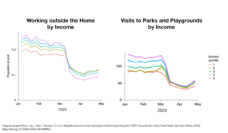Although telemedicine has been available for years, it took a global pandemic to nudge widescale adoption by providers and patients.
I was immediately sold on telehealth following a virtual visit with my child’s dentist to assess the need for possible wisdom tooth extraction. What would have ordinarily consumed half the morning—including travel time to the dental clinic, check-in, and school drop-off—only required fifteen minutes from the convenience of our kitchen table. The dentist had ample time to share the x-rays with us on the screen and discuss treatment options. Since then, my family has opted for other telehealth visits when indicated.
While telehealth is not necessarily appropriate in every circumstance, it offers many benefits.
Definition of Telemedicine and Telehealth
The Health Resources Services Administration defines telehealth as “the use of electronic information and telecommunication technologies to support long-distance clinical health care, patient and professional health-related education, public health, and health administration.” Technologies to deliver telehealth include video conferencing, audio conferencing, email, texting, store-and-forward imaging, remote patient monitoring, and more.
Telemedicine, a narrower term, refers to the remote clinical encounters between a health care professional and a patient for the purpose of diagnosis, consultation, or treatment. Prior to the pandemic, many insurance companies only covered interactive audio and video communication between a provider and patient. During the COVID-19 State of Emergency, payers expanded coverage to include audio-only (telephonic) conversations. Health and Human Services also relaxed the HIPAA Rules so that providers may use any non-public facing platform to communicate with patients, including Apple FaceTime, Google Hangouts video, Facebook Messenger video chat, Doximity, Zoom, and Skype.
The Benefits of Telehealth for Patients
Increase Access to Care
Telehealth provides access to care from anywhere in the world when an internet connection is available.
This option is particularly important for patients who:
- Live in rural or remote areas;
- Need to consult with a specialist with unique expertise in another city or state;
- Are homebound or have mobility challenges;
- Lack adequate transportation or child care;
- Have behavioral health conditions, such as anxiety disorder or autism, that make traveling to a provider’s office or sitting in waiting rooms for long periods of time difficult;
- Are immunocompromised or have a contagious disease.
Improve the Quality of Care
In the first several months of the pandemic, over 40% of US adults delayed or avoided routine, urgent, or emergent care. Telehealth enables patients to receive certain types of preventive care, manage chronic conditions (such as diabetes and hypertension), and receive urgent care quickly.
In the first several months of the pandemic, over 40% of US adults delayed or avoided routine, urgent, or emergent care.
Save Time and Money
Telehealth is extremely convenient for patients because they do not need to miss school or take as much time off from work. Patients can save on travel time and long waits in the provider’s office—not to mention on gas and parking expenses. Many health plans offer 24/7 telehealth coverage through a vendor, enabling patients who become ill at night or on weekends to quickly schedule a virtual visit with a telehealth provider rather than wait in a crowded, noisy urgent care center or emergency room.
Improve Mental Health
Telehealth enables individuals who are reluctant to seek behavioral health care due to stigma to receive these services from the safety of their home. Some primary care practices are facilitating tele-consults with behavioral health specialists.
Disadvantages of Telehealth
Telehealth cannot and should not always replace in-person care. Some patients lack access to reliable internet connections or private telephones. And, of course, certain types of care must occur in person; for example, medical procedures, a range of screening tests, physical examinations, and therapies , such as PT, OT, and ABA therapy for those with difficulty concentrating for a full tele-therapy session.
The Future of Telehealth
According to a 2020 study by the COVID-19 Healthcare Coalition, over 75% of clinicians believe that telehealth has enabled them to provide quality care to their patients. In another survey by Doctor.com, 83% of patients predict they will continue to use telehealth post-pandemic. A McKinsey report estimates that approximately 24% of all office visits and 20% of all emergency room visits could take place through telehealth. Despite some limitations, patients recognize the opportunities for improved access, convenience, enhanced quality of care, and better communication with providers.
As we assess the telehealth data, clinical outcomes, provider experience, and patient satisfaction, we will continue to define the most appropriate indications for telemedicine to improve health care access and outcomes.
Photo via Getty Images














